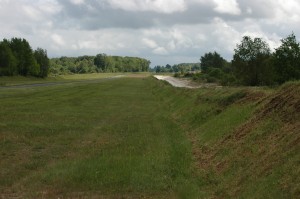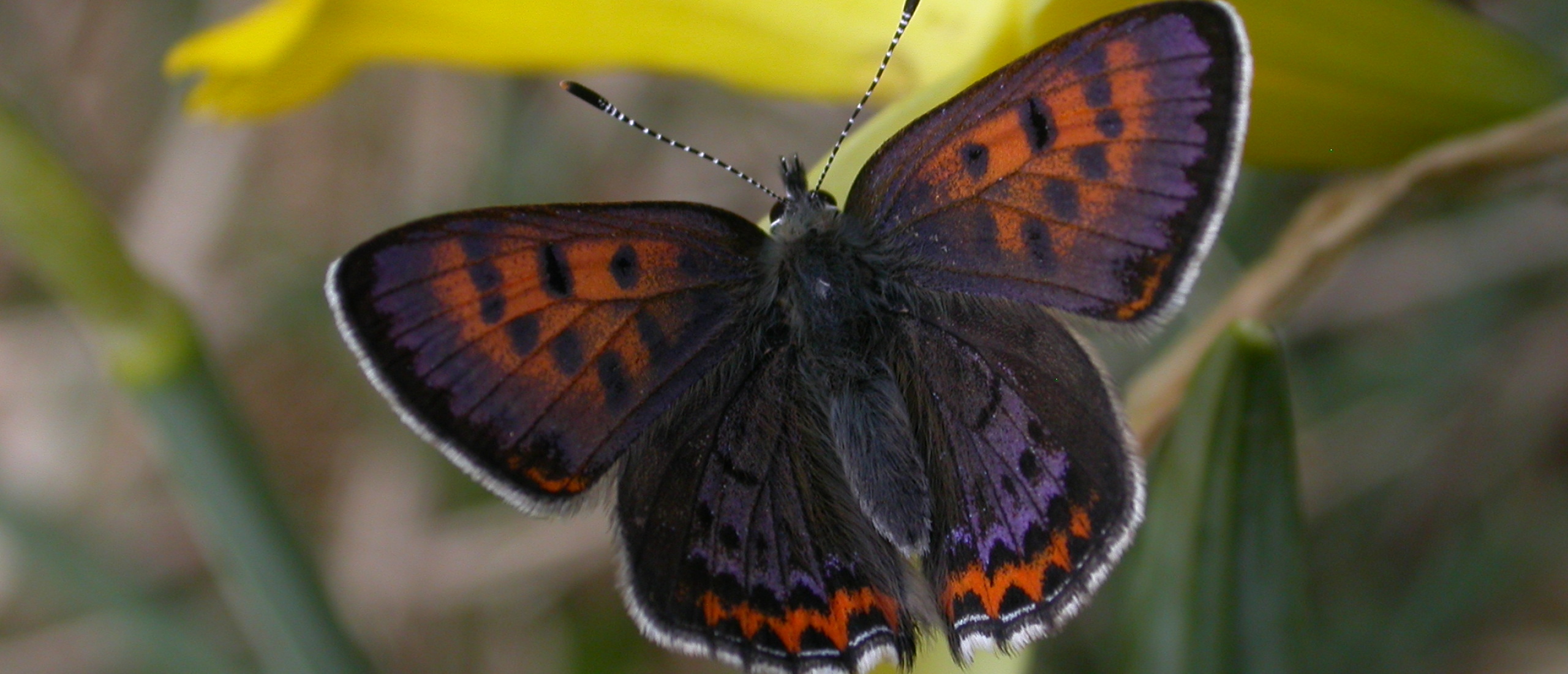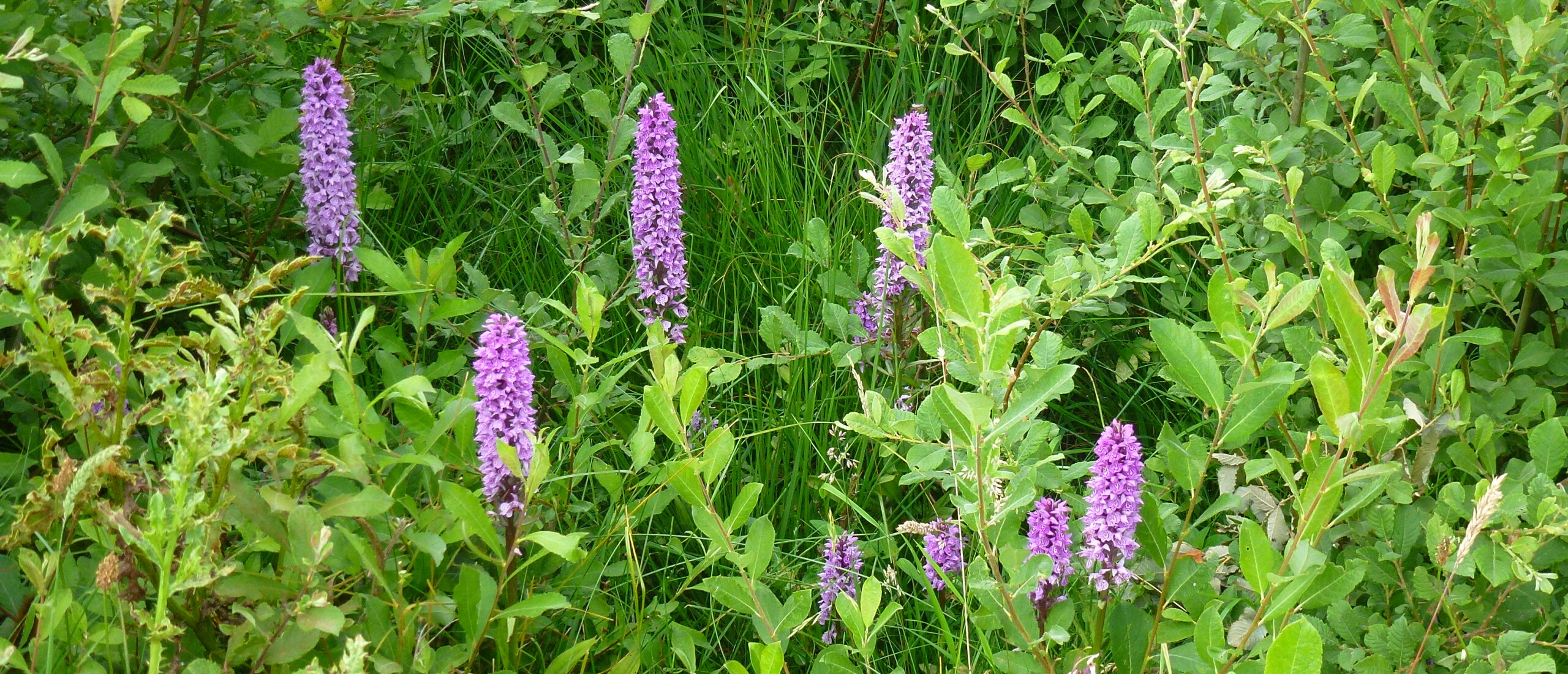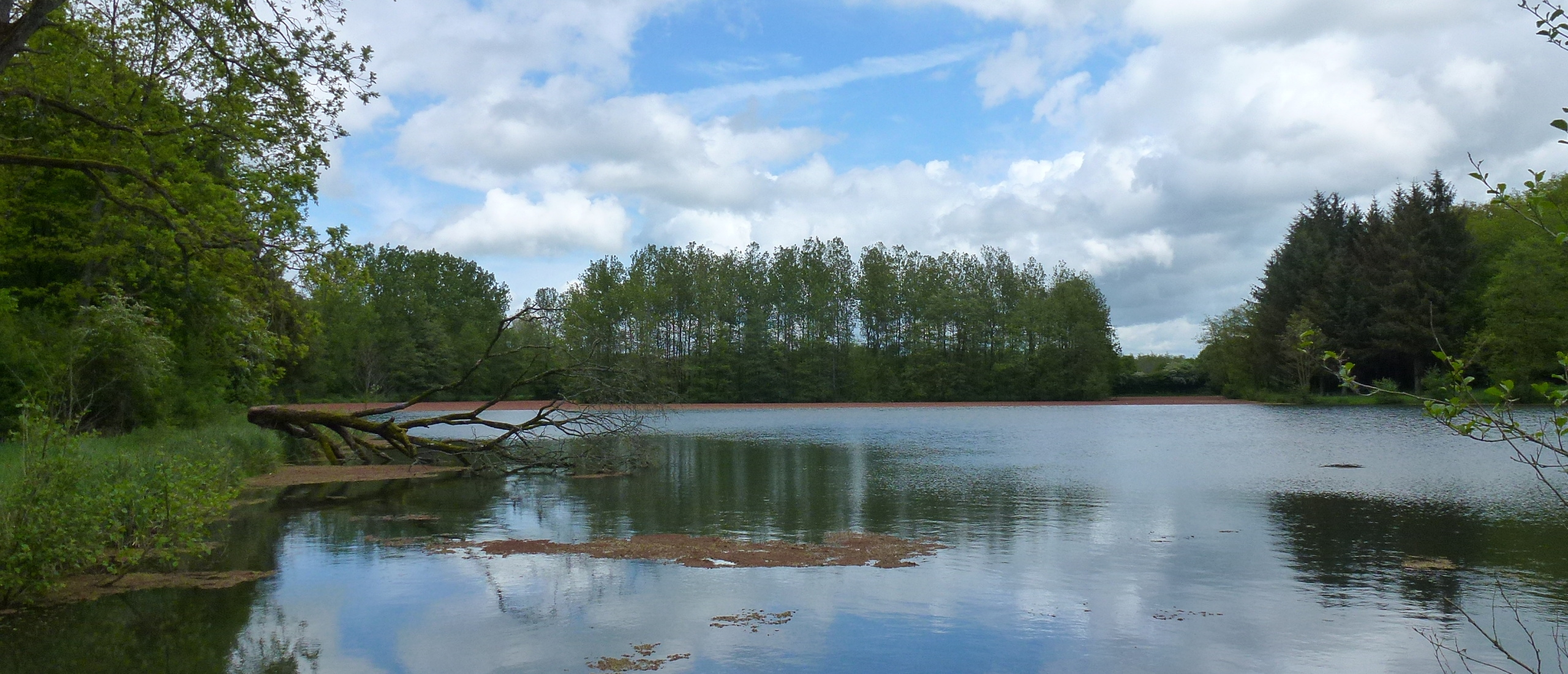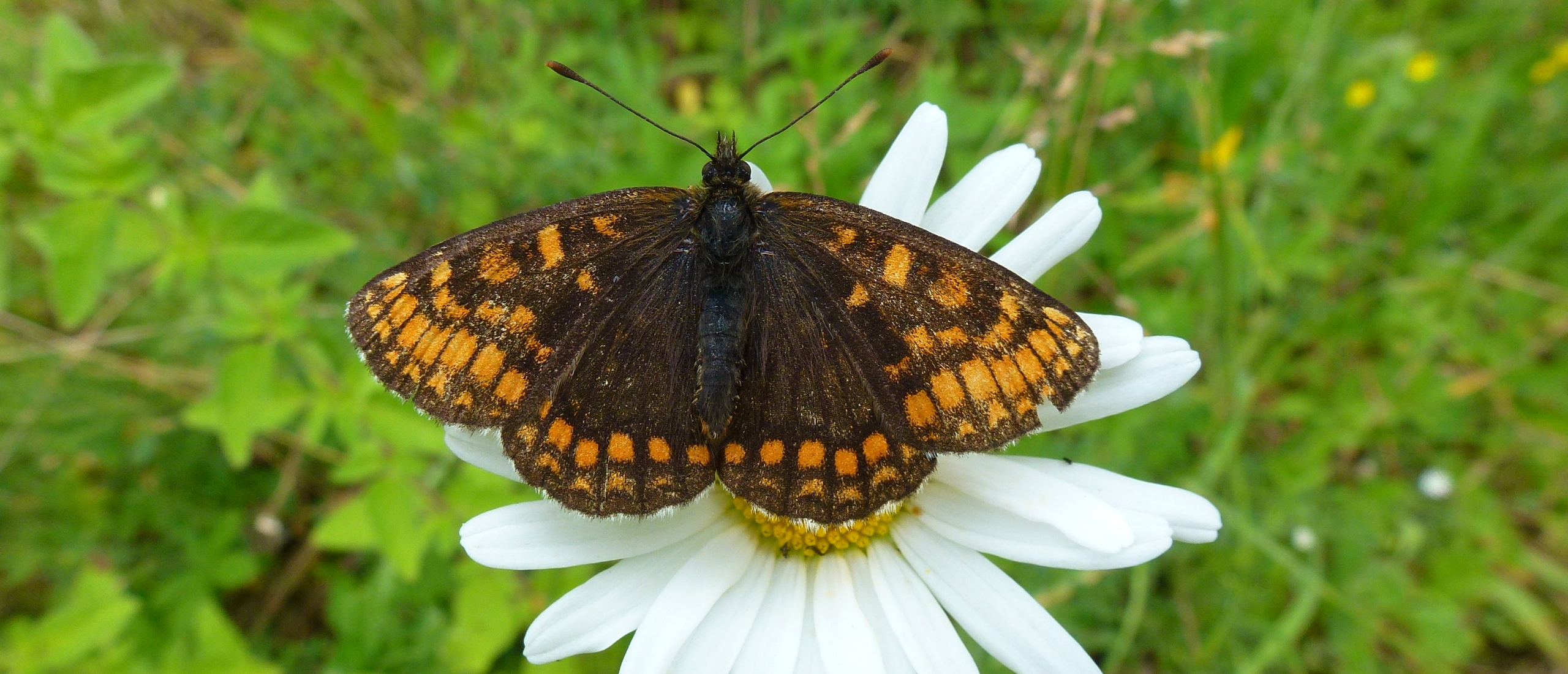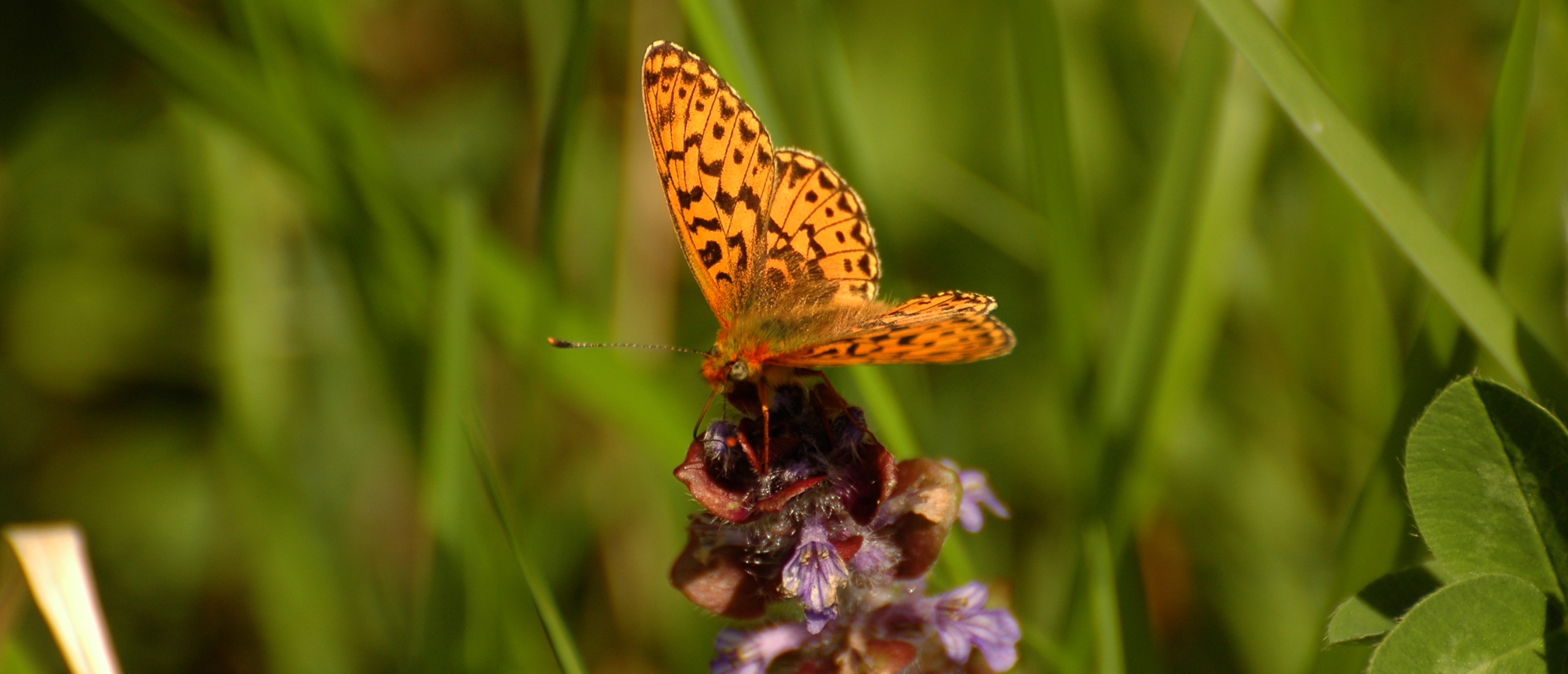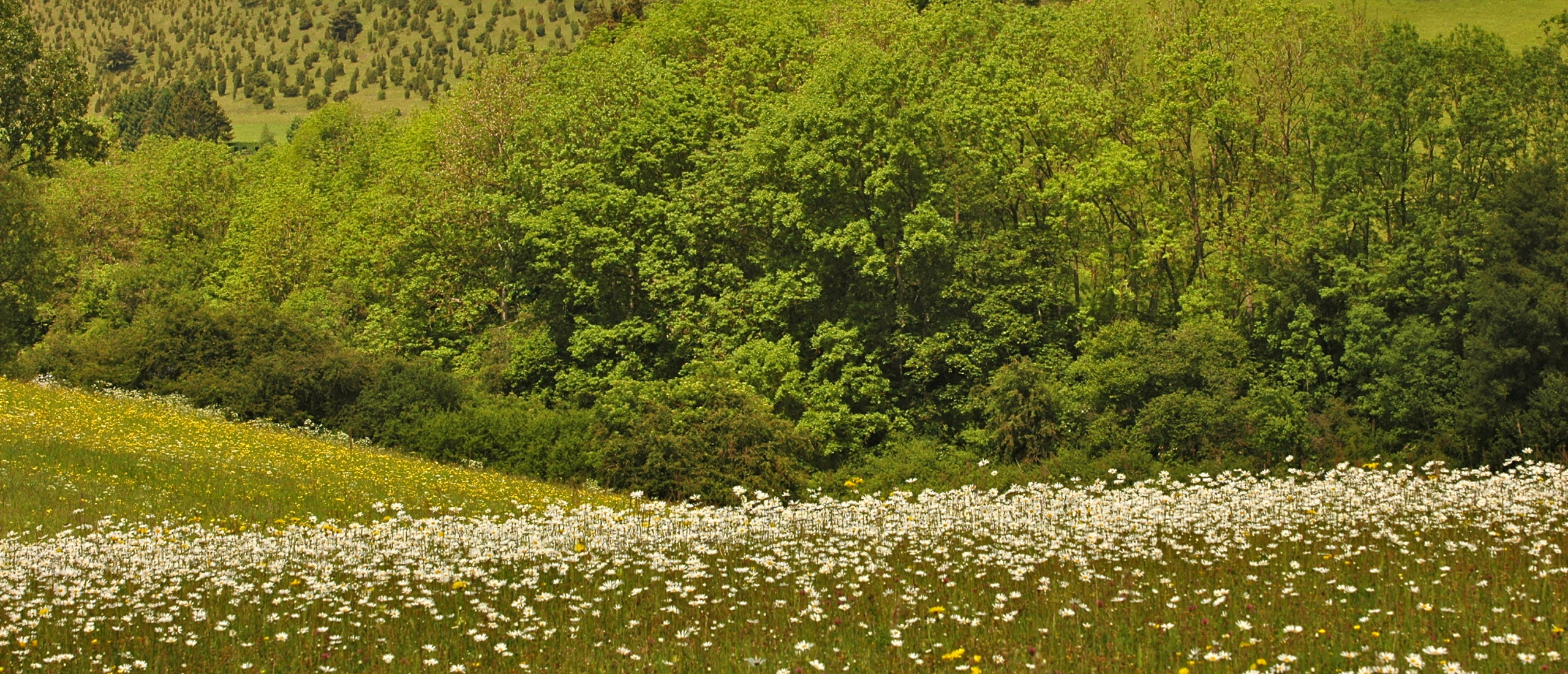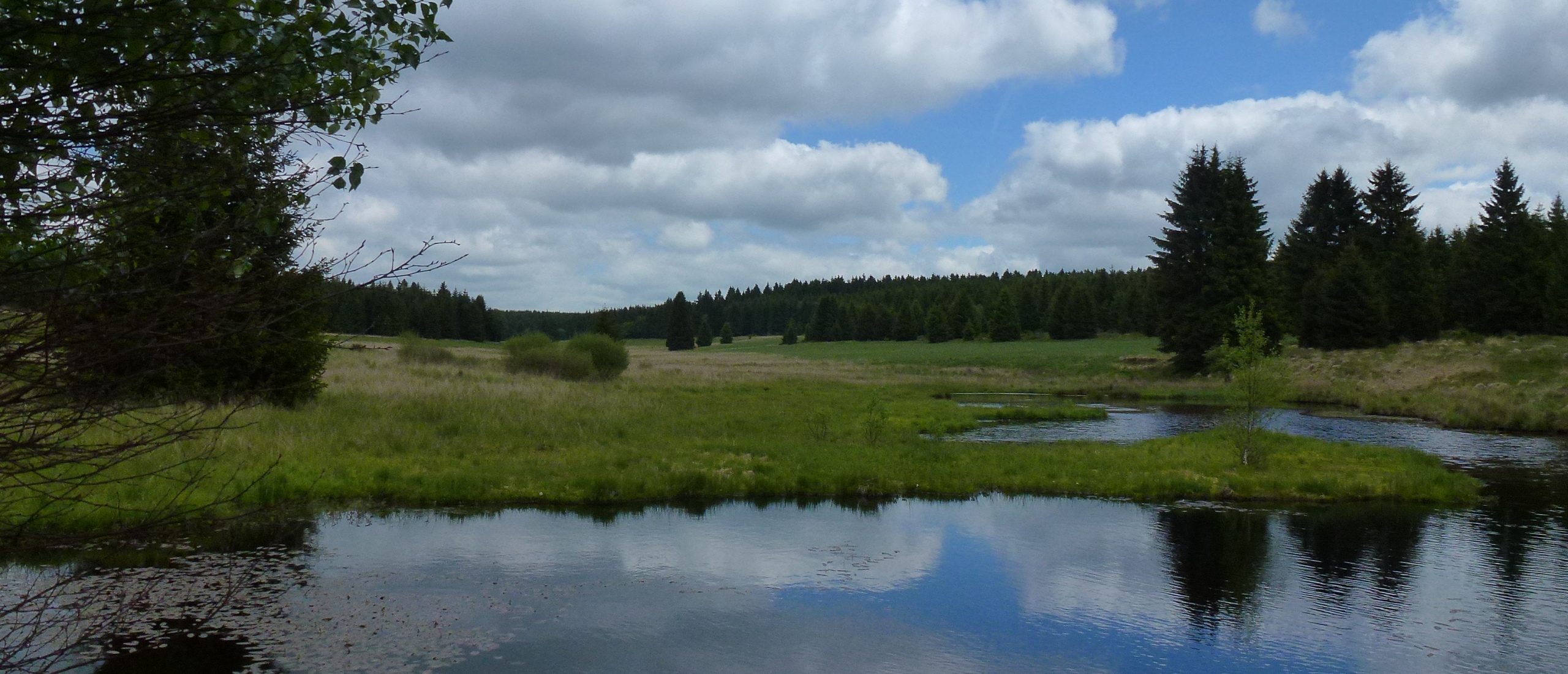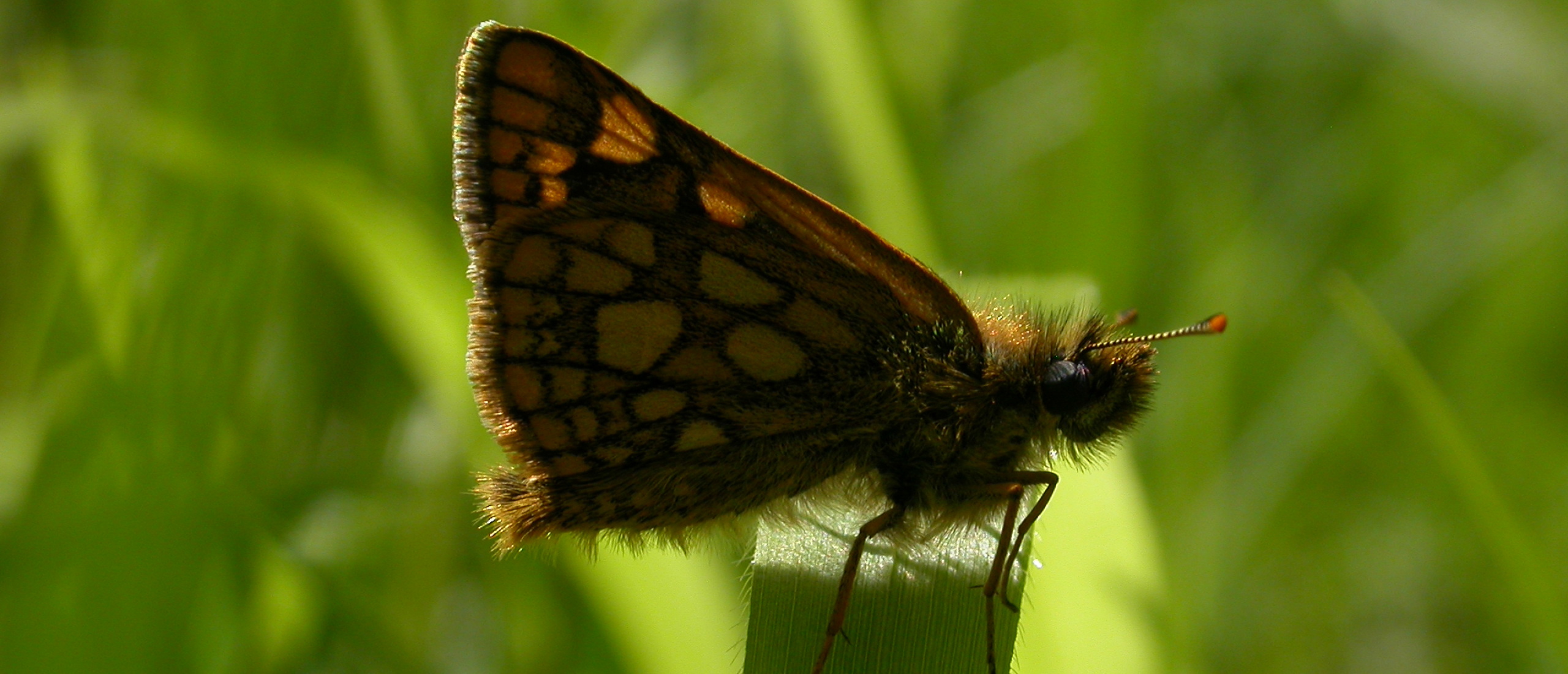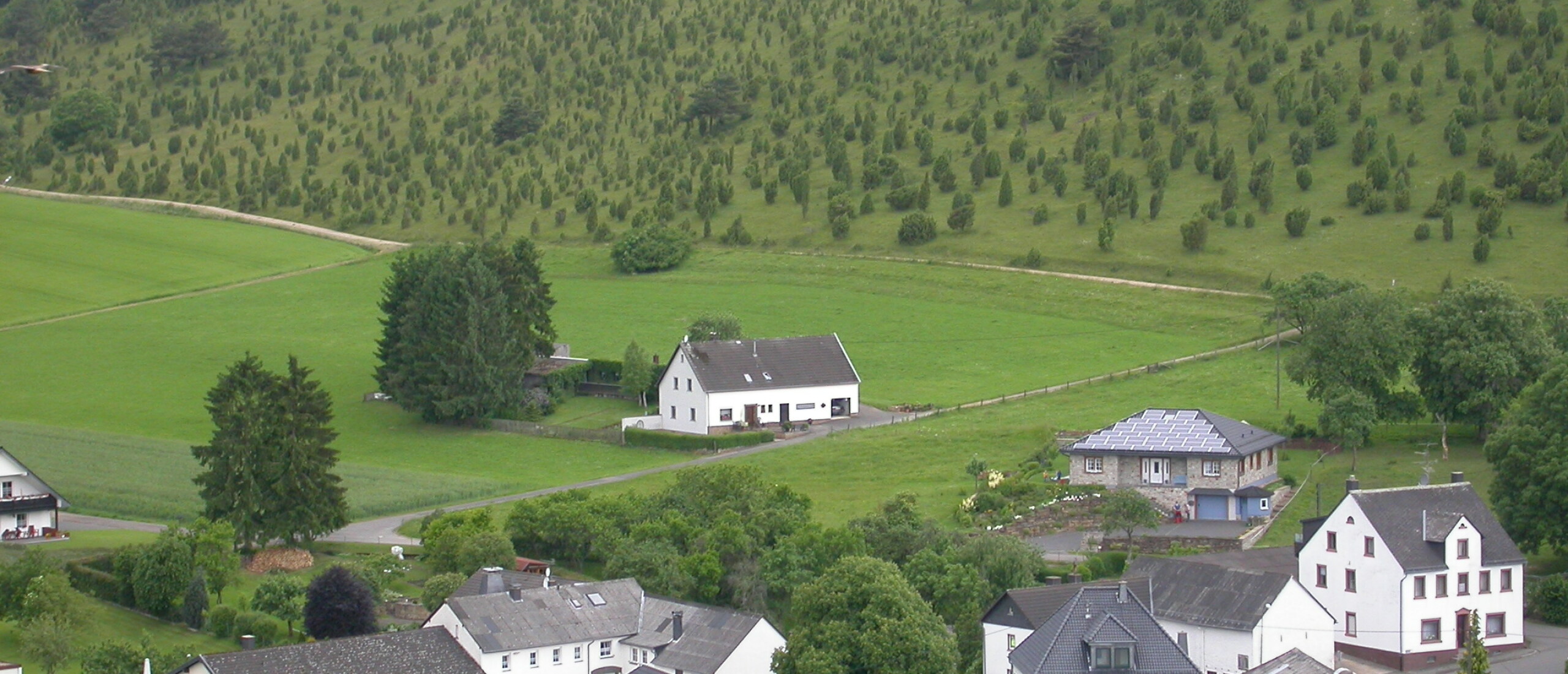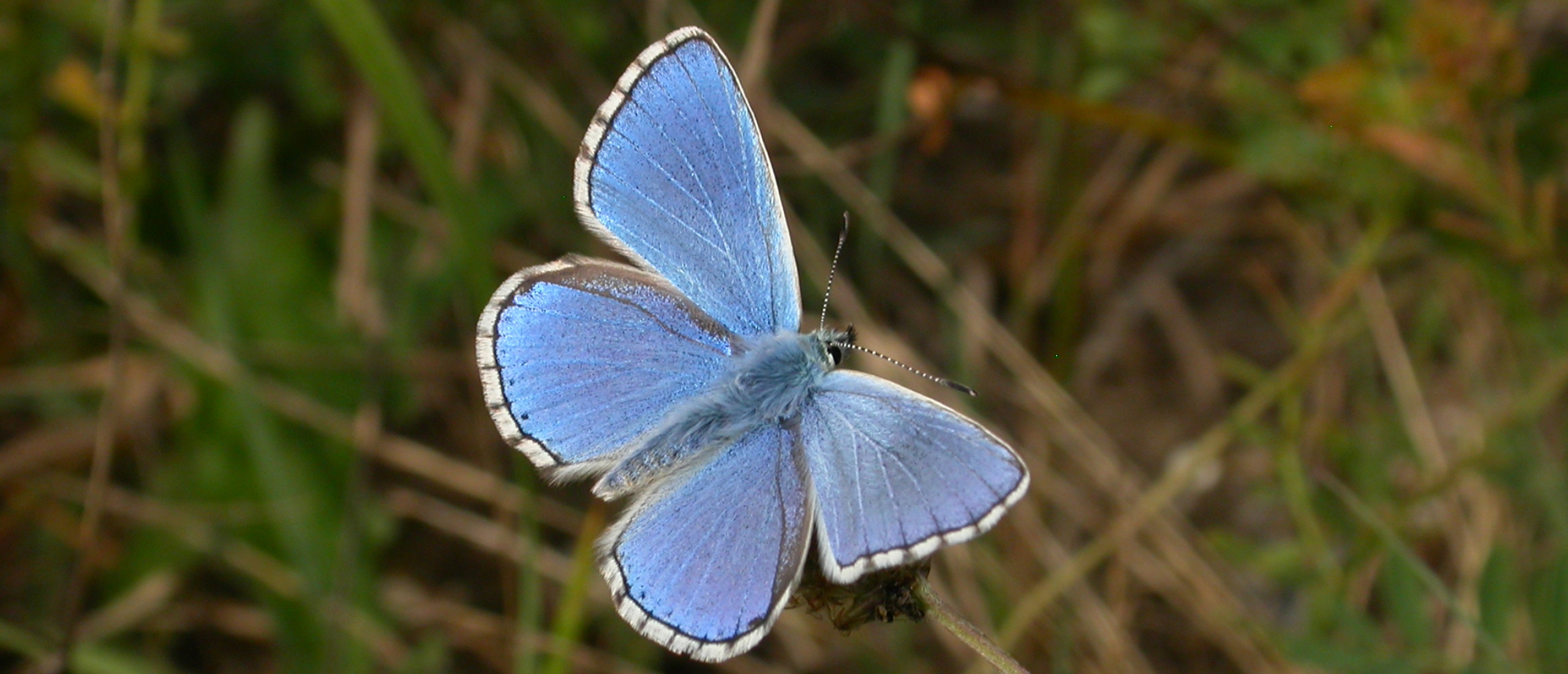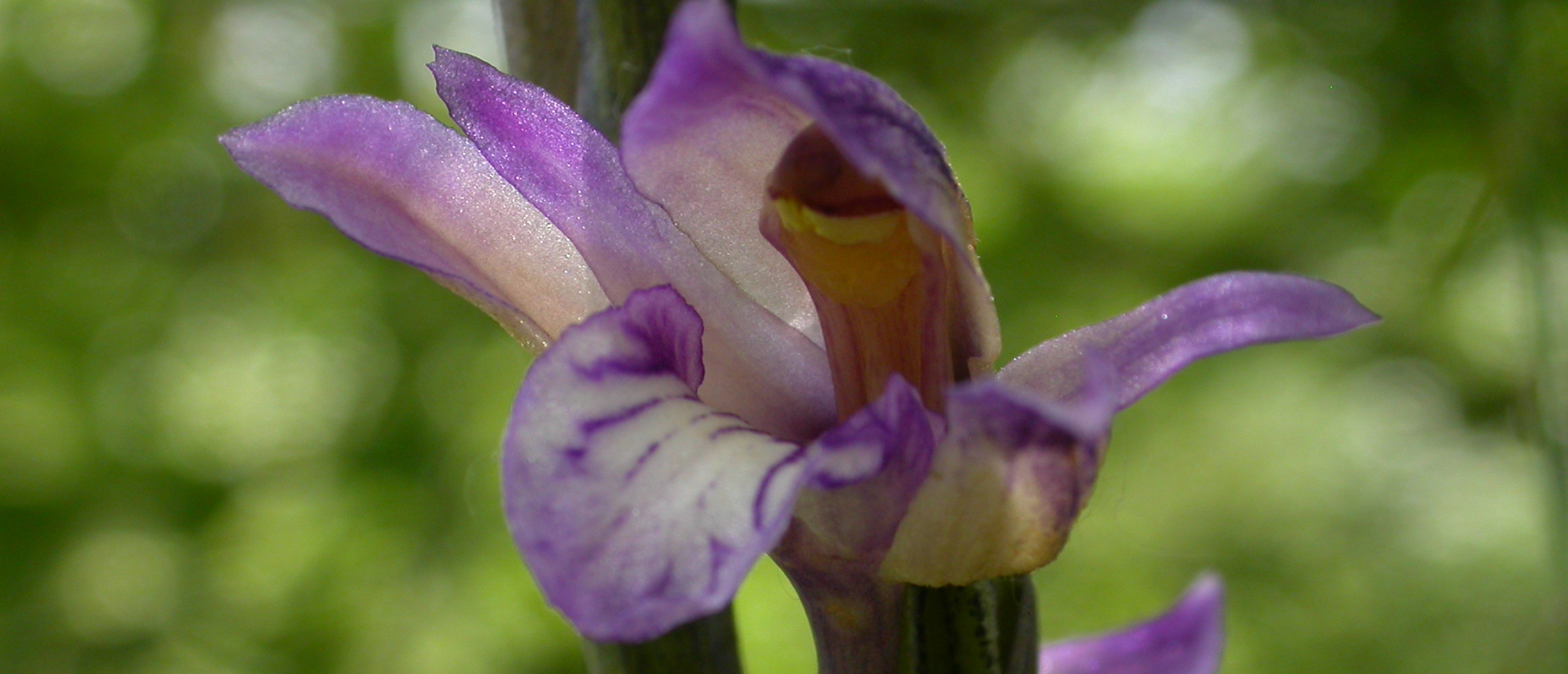
A case of unintended environmental vandalism! Following my highly successful visit to the military camp in the northern Champagne region described in my post of 18th May, which provided me with many new species of butterfly for my 2014 list, I returned to the same area this last weekend....only to be almost completely unable to find any butterflies at all. This had nothing whatever to do with the weather, which was admittedly cool, but not cool enough to thwart the butterflies. To my horror, the entire broad strip of rich, varied wildflower-covered grassland between the road and the bank bordering the military training area proper had been mown, leaving only the very shortest plants still with flowers. Literally thousands of in some cases rare species with extremely restricted ranges in this region must have been killed by this operation. That the verges need to be mown is not in dispute, but to do it at the very height of the spring butterfly season is nothing short of environmental vandalism. In the Netherlands, where mowing of verges is also a national obsession, at least I could contact the Vlinderstichting (Dutch Butterfly Conservation) if I saw such a situation, and they would then try to prevent the mowing happening again in the most sensitive areas, but in northern France no such charity exists to protect butterflies and their habitats, so I have no idea whom to contact.
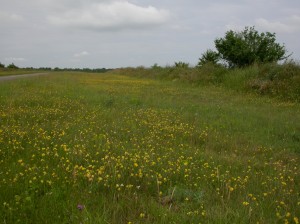 The splendid verges of the military camp, uncut last year in June
The splendid verges of the military camp, uncut last year in June
Luckily, the rest of the grassland of the military area remains untouched, so I can only hope that the butterflies will re-colonise these wonderful verges from over the bank, but that may take some time, and this mowing may become a more regular feature. As it was, on this occasion I saw a total of about seven butterflies, a Black-veined White, Aporia crataegi, a Dingy Skipper, Erynnis tages, a Marsh Fritillary, Euphydryas aurinia, a Glanville Fritillary, Melitaea cinxia, and two Reverdin's Blues, Plebejus argyrognomon, and one female of a new species for my annual list, the Adonis Blue, Lysandra bellargus.
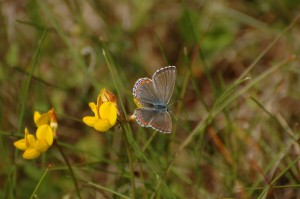 A lone female Adonis Blue that evaded the mowing
A lone female Adonis Blue that evaded the mowing
Following this great disappointment, I drove a short distance into the nearby hills, and although the weather had cooled down even further and therefore no butterflies were flying, I was able to marvel at the orchids that this tiny reserve harbours, and in particular the Violet Bird's Nest Orchid, which seems to be thriving here.
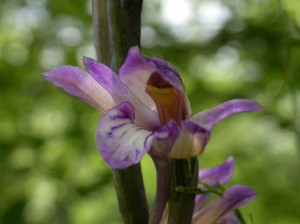 The Violet Bird's Nest Orchid is a spectacular species
The Violet Bird's Nest Orchid is a spectacular species
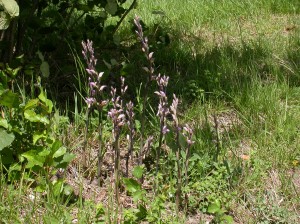 There were several clumps of the Violet Bird's Nest orchid growing here
There were several clumps of the Violet Bird's Nest orchid growing here
Other orchid species I saw in this small area were Fragrant Orchid, Common Twayblade, Early Purple Orchid (already over), Greater Butterfly Orchid, Late Spider Orchid, Lady Orchid and the truly spectacular Lizard Orchid. A small patch of Military Orchids were nearby.
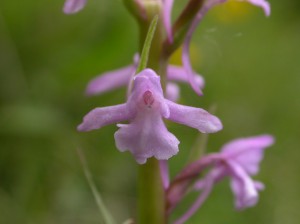 The Fragrant Orchid has rather dainty, petite flowers
The Fragrant Orchid has rather dainty, petite flowers
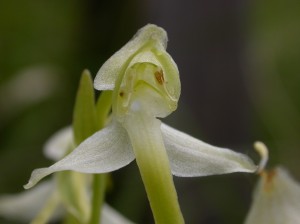 The Greater Butterfly Orchid does not really resemble a butterfly
The Greater Butterfly Orchid does not really resemble a butterfly
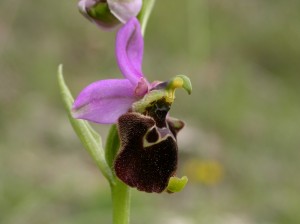 The Late Spider Orchid is not particularly spider-like
The Late Spider Orchid is not particularly spider-like
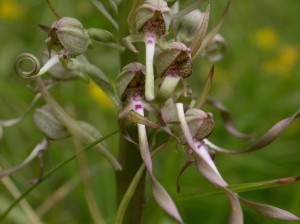 The Lizard Orchid's flowers are quite bizarre
The Lizard Orchid's flowers are quite bizarre
The following day, I headed eastwards into Belgium, and almost immediately I had crossed the border, I found a new species for my 2014 list, a rather tattered female Mazarine Blue, Cyaniris semiargus, which I did not manage to photograph. Unlike the negative example of human interference in "natural" habitats I had witnessed the previous day, here I was able to enjoy an area that has been cleared especially for butterflies. Although the species that was supposed to benefit in this particular case, the Marsh Fritillary, Euphydryas aurinia, appeared to be absent, nonetheless the distantly related Heath Fritillary, Mellicta athalia, was clearly benefitting greatly from the newly opened up areas. I must have seen at least 20 individuals.
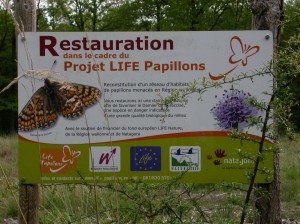 A sign detailing the habitat restoration project for butterflies here
A sign detailing the habitat restoration project for butterflies here
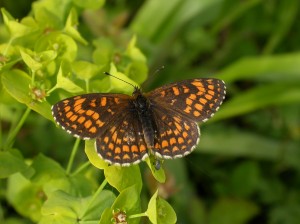 Heath Fritillaries were here in good numbers
Heath Fritillaries were here in good numbers
Other interesting species present here were Black-veined White, Aporia crataegi, Pearl-bordered and Small Pearl-bordered Fritillaries, Clossiana euphrosyne and C. selene, and more than 20 Chequered Skippers, Carterocephalus palaemon (this charming species seems to be having a boom year). But perhaps my most spectacular find was not a butterfly at all, but rather a mating pair of Poplar Hawk Moths, Laothoe populi, which my eyes were somehow drawn to in the long grass by the track.
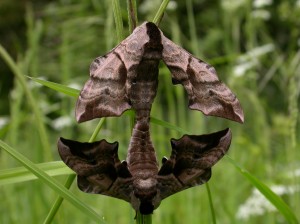 A real prize: a mating pair of Poplar Hawk Moths
A real prize: a mating pair of Poplar Hawk Moths
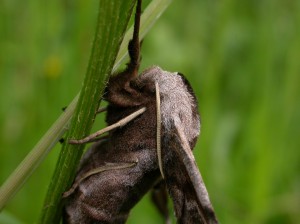 The Poplar Hawks allowed an extremely close approach
The Poplar Hawks allowed an extremely close approach
By the end of the weekend, my 2014 list had reached 46 species.


